Portraying Irish America: Trans-Atlantic Revisions by Dennis Clark
Published in 20th-century / Contemporary History, Features, Issue 4 (Winter 1994), Volume 2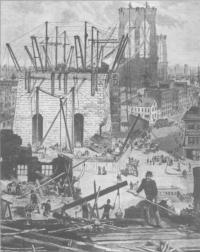 As Ireland’s historians have duelled through contentious and sometimes acrimonious debate in recent years about new research and revisions concerning Irish history, historians in the United States have been engaged in a transformation of studies about the past of the Irish in America. Their differences have not been so loudly declaimed or headlined as those in Ireland, but that may simply be because America is so much of a bigger arena and IrishAmerican studies are simply one of a remarkable array of ethnic preoccupations in the country. A broad dispute about whether ‘multi-cultural curricula’ should embrace the nation’s widening spectrum of ethnic traditions, or whether ‘dead European white males’ should remain the pillars of learning has somewhat overshadowed the specific explorations of sub-cultural minorities such as the Irish. Indeed, some would contend that the Irish in the United States are no longer a cultural minority, so easily have they adapted to mainstream America. Nobody who has attended a ceili in a major city or dealt with the audiences of the Irish American Cultural Institute could countenance such simplicity.
As Ireland’s historians have duelled through contentious and sometimes acrimonious debate in recent years about new research and revisions concerning Irish history, historians in the United States have been engaged in a transformation of studies about the past of the Irish in America. Their differences have not been so loudly declaimed or headlined as those in Ireland, but that may simply be because America is so much of a bigger arena and IrishAmerican studies are simply one of a remarkable array of ethnic preoccupations in the country. A broad dispute about whether ‘multi-cultural curricula’ should embrace the nation’s widening spectrum of ethnic traditions, or whether ‘dead European white males’ should remain the pillars of learning has somewhat overshadowed the specific explorations of sub-cultural minorities such as the Irish. Indeed, some would contend that the Irish in the United States are no longer a cultural minority, so easily have they adapted to mainstream America. Nobody who has attended a ceili in a major city or dealt with the audiences of the Irish American Cultural Institute could countenance such simplicity.
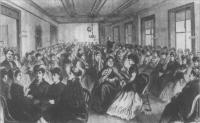 American Conference for Irish Studies, although mostly devoted to literature interests, provides the chief network for Irish American historians to cultivate their professional ties around Irish subject matter. An examination of recent trends and publications reveals that Irish American historical perspectives have been notably expanded, both as a result of new research and also because of new orientations toward older categories for framing the IrishAmerican past. Lawrence McCaffrey’s Textures of Irish America (1992) provides a critique of the Irish American saga of social and economic mobility, and it is a book rich with insights from literary and biographical sources. McCaffrey, Emeritus Professor at Loyola University, asserts that ‘Catholicism has been the essence of Irish America’, and his reflections on the fortunes of the group are marshalled around the themes of church, urban politics and Irish American nationalism, the
American Conference for Irish Studies, although mostly devoted to literature interests, provides the chief network for Irish American historians to cultivate their professional ties around Irish subject matter. An examination of recent trends and publications reveals that Irish American historical perspectives have been notably expanded, both as a result of new research and also because of new orientations toward older categories for framing the IrishAmerican past. Lawrence McCaffrey’s Textures of Irish America (1992) provides a critique of the Irish American saga of social and economic mobility, and it is a book rich with insights from literary and biographical sources. McCaffrey, Emeritus Professor at Loyola University, asserts that ‘Catholicism has been the essence of Irish America’, and his reflections on the fortunes of the group are marshalled around the themes of church, urban politics and Irish American nationalism, the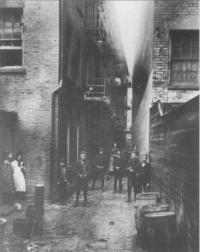 traditional categories for organising the disparate adventures of the far-flung Irish in Yankee land. Similarly, Jack Beatty’s The Rascal King: The Life and Times of James Michael Curley (1992) gives a riotously funny and very readable account of the zany Boston mayor that is rife with stories of religious hypocrisy and the corruption of urban politics. Beatty’s book is not only a biography, but an excellent commentary on the political environment in which men like Curley func-tioned. These books, keenly researched and well written, rely on the triad of themes noted above to recount Irish American evolutions. A different outlook and classification, however, has emerged from a variety of scholarly works in the last decade. Kerby Miller’s monumental Emigrants and Exiles: Ireland and the Irish Exodus to North America (1985) is a searching examination of the mentality of the immigrants based on a huge collection of letters compiled by this gifted professor who teaches at the University of Missouri. It is a book that continues to be controversial because it gives an interpretation of Irish immigrant attitudes that verge on the pathological in their emphasis on a sense of loss and a cult of exile. It surpasses the older categories of writing in that it penetrates to the question of Irish American identity, the sense of self and group destiny that profoundly conditioned behaviour in religion, politics and nationalist striving. A further penetration into factors underlying the older categories is the exploration of just what social formations underlay politics and public manifestations of Irish American activity. In a book edited by Timothy Meagher, From Paddy to Studs: Irish American Communities in the Turn of the Century Era, 1880 to 1920 (1980), Meagher himself has an essay devoted to the way in which Irish Americans balanced their ethnic identity
traditional categories for organising the disparate adventures of the far-flung Irish in Yankee land. Similarly, Jack Beatty’s The Rascal King: The Life and Times of James Michael Curley (1992) gives a riotously funny and very readable account of the zany Boston mayor that is rife with stories of religious hypocrisy and the corruption of urban politics. Beatty’s book is not only a biography, but an excellent commentary on the political environment in which men like Curley func-tioned. These books, keenly researched and well written, rely on the triad of themes noted above to recount Irish American evolutions. A different outlook and classification, however, has emerged from a variety of scholarly works in the last decade. Kerby Miller’s monumental Emigrants and Exiles: Ireland and the Irish Exodus to North America (1985) is a searching examination of the mentality of the immigrants based on a huge collection of letters compiled by this gifted professor who teaches at the University of Missouri. It is a book that continues to be controversial because it gives an interpretation of Irish immigrant attitudes that verge on the pathological in their emphasis on a sense of loss and a cult of exile. It surpasses the older categories of writing in that it penetrates to the question of Irish American identity, the sense of self and group destiny that profoundly conditioned behaviour in religion, politics and nationalist striving. A further penetration into factors underlying the older categories is the exploration of just what social formations underlay politics and public manifestations of Irish American activity. In a book edited by Timothy Meagher, From Paddy to Studs: Irish American Communities in the Turn of the Century Era, 1880 to 1920 (1980), Meagher himself has an essay devoted to the way in which Irish Americans balanced their ethnic identity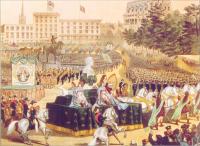 with a mainstream patriotic sentiment, and the other authors try to sort out the process of community building from Massachusetts to San Francisco. Again, it is the probing into the social structures and attitudes that underlay the public image of the Irish that is significant for future research. In a comparative study of nine cities, Steven P. Erie in Rainbow’s End: Irish Americans and the Dilemmas of Urban Machine Politics 1840-1985 (1988) reveals the adumbration of social aspirations that accompanied the immigrant attachment to big city political machines. His analysis goes far beyond the previous portraits of political boss behaviour and the recitation of electoral ascendancy. Perhaps the best study of an Irish American community and its engagement with an occupational setting is David M. Emmon’s The Butte Irish: Class and Ethnicity in an American Mining Town. This book traces the occupational and organisational life of the Irish in the Montana copper mines where Corkmen and Monaghan men laboured in a compact of immigrant subservience to copper barons who were themselves Irish-born or of
with a mainstream patriotic sentiment, and the other authors try to sort out the process of community building from Massachusetts to San Francisco. Again, it is the probing into the social structures and attitudes that underlay the public image of the Irish that is significant for future research. In a comparative study of nine cities, Steven P. Erie in Rainbow’s End: Irish Americans and the Dilemmas of Urban Machine Politics 1840-1985 (1988) reveals the adumbration of social aspirations that accompanied the immigrant attachment to big city political machines. His analysis goes far beyond the previous portraits of political boss behaviour and the recitation of electoral ascendancy. Perhaps the best study of an Irish American community and its engagement with an occupational setting is David M. Emmon’s The Butte Irish: Class and Ethnicity in an American Mining Town. This book traces the occupational and organisational life of the Irish in the Montana copper mines where Corkmen and Monaghan men laboured in a compact of immigrant subservience to copper barons who were themselves Irish-born or of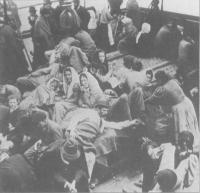 Irish background. It is a notable work that is part of a thoroughly altered view of the American west that focuses not on cowboys and gunslingers, but upon the extractive industries and corporate power that shaped the expansion of the frontier. This is quite a departure from the tales of mountain man Bad Hand Tom Fitzpatrick or the story of Myles Keogh with General Custer at the Little Big Horn. My own book, Hibernia America: The Irish and Regional Cultures (1986) attempts to broaden interest in the differentiation that accompanied Irish dispersion throughout the vast geography of America, where the various regions developed distinct social patterns to which immigrants had to adapt. The argumentation of Margaret E. Fitzgerald and Joseph A. King in The Uncounted Irish in Canada and the United States (1990) is aligned in a similar direction, an extension of Irish studies beyond the major urban cen-tres and into the rural and small town experience of the group in areas far beyond the East coast. Although we now have quite a list of books about the Irish in various cities, we are still far from a comprehensive picture of their diffusion. David Doyle in his contribution to Volume V of The New History of Ireland questions whether any integrated assessment of this farranging dispersion is possible, and one wonders if any attempt to perform such a task will be made given the marginal character of Irish studies in
Irish background. It is a notable work that is part of a thoroughly altered view of the American west that focuses not on cowboys and gunslingers, but upon the extractive industries and corporate power that shaped the expansion of the frontier. This is quite a departure from the tales of mountain man Bad Hand Tom Fitzpatrick or the story of Myles Keogh with General Custer at the Little Big Horn. My own book, Hibernia America: The Irish and Regional Cultures (1986) attempts to broaden interest in the differentiation that accompanied Irish dispersion throughout the vast geography of America, where the various regions developed distinct social patterns to which immigrants had to adapt. The argumentation of Margaret E. Fitzgerald and Joseph A. King in The Uncounted Irish in Canada and the United States (1990) is aligned in a similar direction, an extension of Irish studies beyond the major urban cen-tres and into the rural and small town experience of the group in areas far beyond the East coast. Although we now have quite a list of books about the Irish in various cities, we are still far from a comprehensive picture of their diffusion. David Doyle in his contribution to Volume V of The New History of Ireland questions whether any integrated assessment of this farranging dispersion is possible, and one wonders if any attempt to perform such a task will be made given the marginal character of Irish studies inAmerican academic circles. One instance in which a major default will be partly remedied is the case of New York City. This metropolis, so populous through the generations with Irish immigrants and their descendants, has been a defiant subject for study simply because of the scale and complexity of its compacted Irish concentration. At last a work is underway to try to take the measure of Irish New York. Due to the vision of
Angela Carter and Marion Casey, and the excellent efforts of the Irish Institute under the tireless octogenarian Paul O’Dwyer, the New York Irish History Roundtable has all but completed assembly of a score of essays on the Irish in the city. Timothy Meagher and Ron Bayor are editing this eagerly antiCipated collection. Some of the revision of Irish American history is arising out of the general trends in Irish and American historiography. Cormac 6 Grada has noted the strange absence of study of the Great Famine of 1845-48, and the flight of about two million Irish to America at the time is a subject of wide implications, yet very little has been done to examine the import of this immigration for American development. The American Conference for Irish Studies attempted to direct attention to the subject at its 1993 gathering at Villanova University.
James Donnelly from the University of Wisconsin and Mary Daly from University College Dublin had been invited by Villanova’s Irish Studies Program under James Murphy to give lectures on interpretations 01 the Famine prior to the conference. Although not enough material was presented at the conference to adequately address the momentous topic, at least a start was made. Such an investigation relates to the continuing work to place immigrant experience and ethnic traditions in more careful relation to the main features of general American history, a process that must be pursued if the benefits of recent social, urban, labour and women’s studies are to be properly integrated into the general learning that is correcting the foreshortened history perspectives of the past.
Nowhere are women’s studies more active than in the United States, and they portend a transformation of historical learning at all levels. Janet Nolan’s Ourselves Alone: Women’s Emigration from Ireland, 1885-1920 (1989) and Hasia Diner’s Erin’s Daughters in America: Irish Immigrant Women in the Nineteenth Century (1983) are studies that have given us an important insight into an all but completely neglected dimension of immigrant life, that of women whose presence was previously clouded by religious and social attitudes and segregation from historians’ scrutiny. An even more powerful clarification of female status is Carole Turbin’s Working Women of Collar City: Gender, Class and Community in Troy, 1864-86 (1992), a truly remarkable revelation of the situation and responses of Irish working women in collar factories in upstate New York. It is an erudite blend of women’s and labour history that affords us the best and most telling depiction of Irish female working life.
Studies of popular culture are another area of research freshening, and Charles Fanning’s editing of The Exiles of Erin: Nineteenth Century Irish American Fiction (1987) and subsequent work throw a new light on the continuity of Irish writing. There is still much to be done to compile the record of Irish journalism as well. Mari Kathleen Fielder has presented articles on the Irish in the American theatre, and her archival digging still awaits publication, but the work of this granddaughter of Irish thespians is an exciting trove of stage lore and immigrant entertainment. Musicologist and performer Mick Moloney, whose recordings are very popular, has also finished a thesis that documents the perSistence of Irish folk music teaching and playing across the American landscape, and it is a treasury of interviews and accounts about the way music held Irish people together through the generations.
With the diminishing of the Irish American population that can be confidently identified culturally as having strong ties with Ireland, and the upstaging of Irish Americans by very large new ethnic groups that have displaced them politically and otherwise, it is not clear that Irish studies will have continued vitality in the future in this country. There are few university positions where such studies are in any way secure or with real institutional support. Bringing the history of the group in the United States into more replete dimensions will be difficult and Irish American scholars need much encouragement and support from their colleagues in Ireland. It is necessary that those in Ireland interested in overseas cultural affairs maintain strong ties with an Irish America that is increasingly beset by competitive influences on a large scale. The history of the Irish in the United States is a subject without which modern Irish history itself simply cannot be made intelligible. It is an academic and popular extension of Irish life that is crucial in its relevance for a full understanding of the past of the island and its people.
This article was submitted by the distinguished Irish-American social historian, Dennis Clarke, before his untimely death in September 1993 (obituary History Ireland Spring (1994).
















